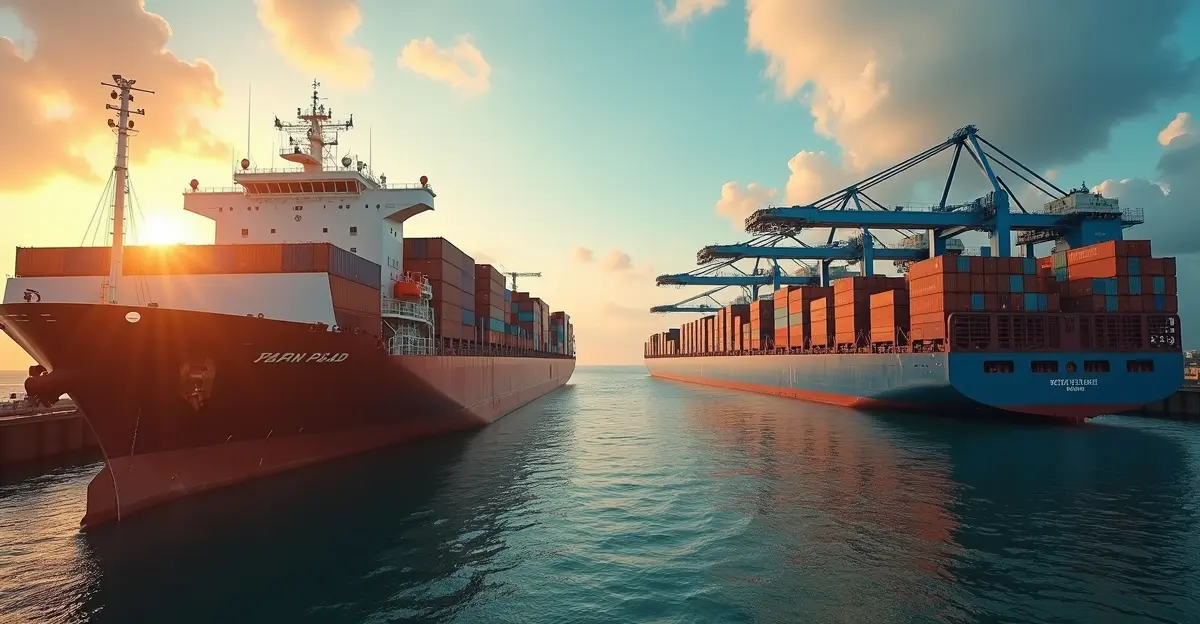The 2025 trade war escalation has dramatically increased US tariffs to 27%, creating sectoral winners and losers while driving consumer price increases of 1.9% above trend. Manufacturing gains come at the expense of service and agricultural sectors facing retaliation.

Major Trade War Escalation in 2025
The global economy is facing unprecedented trade tensions as the United States implemented sweeping tariff measures throughout 2025, triggering what economists are calling the most significant trade war escalation in decades. Beginning in April 2025, the Trump administration imposed reciprocal tariffs that dramatically increased average US tariff rates from 2.5% to an estimated 27% - the highest level in over a century.
Sectoral Impacts Across Industries
The trade war has created a complex web of winners and losers across different economic sectors. Manufacturing industries, particularly steel, aluminum, and automotive sectors, have seen significant protection through 50% tariffs on metals and 25% on imported cars. However, this protection comes at a cost to other sectors. "We're seeing a dramatic reshuffling of the economic deck," says Dr. Maria Rodriguez, an international trade economist at Georgetown University. "While manufacturing employment has increased by over 2%, service and agricultural sectors are bearing the brunt of retaliatory measures from trading partners."
Electronics and pharmaceutical sectors face particular challenges with new tariffs on semiconductors and imported medications. The electrical equipment industry, where 30% of output depends on global value chains, has been severely disrupted according to CEPR analysis.
Producer Responses and Adaptation Strategies
Businesses across affected sectors are implementing various strategies to navigate the new trade landscape. Many manufacturers are accelerating reshoring efforts, while others are exploring alternative supply chains in Southeast Asia. "The speed of these tariff implementations caught many businesses off guard," notes manufacturing executive James Chen. "We're seeing companies that relied heavily on Chinese suppliers now scrambling to establish operations in Vietnam and Indonesia, but the transition costs are substantial."
The Yale Budget Lab analysis shows industrial output in tariff-affected industries has risen sharply by 3.5% year-to-date, indicating some success in domestic production substitution. However, this comes with significant adjustment costs and supply chain disruptions.
Consumer Price Effects and Inflation Concerns
American consumers are feeling the direct impact of the trade war through higher prices across multiple product categories. According to Yale research, core goods prices are 1.9% above pre-2025 trends, with particularly sharp increases in appliances, electronics, and home furnishings. The analysis estimates consumer pass-through rates of 61-80% for new tariffs, meaning the majority of tariff costs are being passed directly to consumers.
"The average American family is paying hundreds of dollars more annually for everyday goods," explains consumer advocate Sarah Johnson. "From washing machines to smartphones, the price increases are widespread and affecting household budgets across income levels."
Global Economic Consequences
The trade war's impacts extend far beyond US borders. CEPR analysis projects global welfare losses reaching 2% in worst-case scenarios, with China facing 1.5% welfare losses and Southeast Asian economies like Vietnam, Indonesia, and Malaysia among the most heavily impacted. Canada and Mexico, as close trading partners, face real income losses of 2% and 2.7% respectively.
The European Union has seen its average tariff rates rise from below 2% to around 17%, creating additional trade friction and economic uncertainty across the Atlantic.
Legal Challenges and Future Outlook
The tariff policies face significant legal challenges, with federal courts ruling that tariffs imposed under the International Emergency Economic Powers Act are illegal. The Supreme Court heard oral arguments in November 2025 in the consolidated case of Learning Resources v. Trump, though the tariffs remain in effect during appeals.
"The economic landscape has fundamentally changed," concludes international trade lawyer Michael Thompson. "Even if some tariffs are eventually rolled back, the supply chain disruptions and business relationships damaged during this period will have lasting effects on global trade patterns for years to come."

 Nederlands
Nederlands
 English
English
 Deutsch
Deutsch
 Français
Français
 Español
Español
 Português
Português









